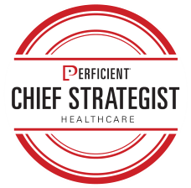Democratization of Ownership and Stewardship
 The rise of big data, self-service, and more powerful and flexible end-user information visualization and preparation tools, consumer/ member/patient experience is impacting governance in a significant manner with regard to structure, decision rights, and accountabilities. End-users are gaining more control of these assets, including the ability to integrate and manipulate them for their own purposes, and being able to select assets based on a relevance criteria not necessarily codified in classic metadata or semantic models.
The rise of big data, self-service, and more powerful and flexible end-user information visualization and preparation tools, consumer/ member/patient experience is impacting governance in a significant manner with regard to structure, decision rights, and accountabilities. End-users are gaining more control of these assets, including the ability to integrate and manipulate them for their own purposes, and being able to select assets based on a relevance criteria not necessarily codified in classic metadata or semantic models.
What this means is that the responsibility of governance, such as adhering to access policies, is becoming the responsibility of practically any individual that needs or uses the assets. Stewardship, therefore, is becoming democratized across the user community, directly impacting the centralized model where clear stewards and owners are typically named along domain boundaries. This paradigm shift means that anyone who uses the data has a say in how it is governed, but also the responsibility to behave accordingly.
Communication has always been key to the success of governance programs, but this de-centralization movement places even more emphasis upon ensuring the entire user community remains aware of, and involved in, the governance program.
This federation of accountability means that governance programs will need to adapt and evolve their accountability and decision rights models to address and support this highly distributed model, and ensure metadata and semantic consistency across the enterprise. Partnering with IT in a highly collaborative fashion is critical to the success in this new environment, as IT will continue to be responsible for the delivery of the information, content, or knowledge needed by the business users, even as the “final product” becomes more and more in the realm of the end user.
Consistency in Cross-Enterprise Semantics and Metadata
Addressing the ongoing explosion of data, content, and knowledge sources and storage options requires establishing consistent metadata attributes and semantic models across the enterprise to effectively govern enterprise assets. The primary objective of any enterprise governance program is to ensure consistent and timely access to these assets, so reaching consensus and agreement on a common understanding of concepts and metadata attributes must be addressed and enforced by the program.
Cloud applications, for example, continue to be adopted and most have their own semantic and metadata models. Integration of these respective views is foundational to governance because without it meaning and reusability of the information suffers.
What this requires is substantial planning prior to entering agreements with providers and well-defined methods, along with enterprise common models, that account for the inconsistencies across solutions. A rigorous approach to defining and monitoring metadata attributes and semantic concepts, driven by an enterprisewide governance council with business membership across all affected domains, must be adopted and continually supported to guarantee consistency across the disparate set of systems.
Approaches to this can be technological, procedural, or a combination of both. Allowing the organization to continue with siloed or separate semantic and metadata understandings is no longer an option for effective enterprise information, content or knowledge governance.
This blog was co-authored by Mark Steinbacher and Priyal Patel.
To learn more about the rebirth of governance in healthcare, and exploring the trends and impact on patients and organizational operations, you can download the guide below.

